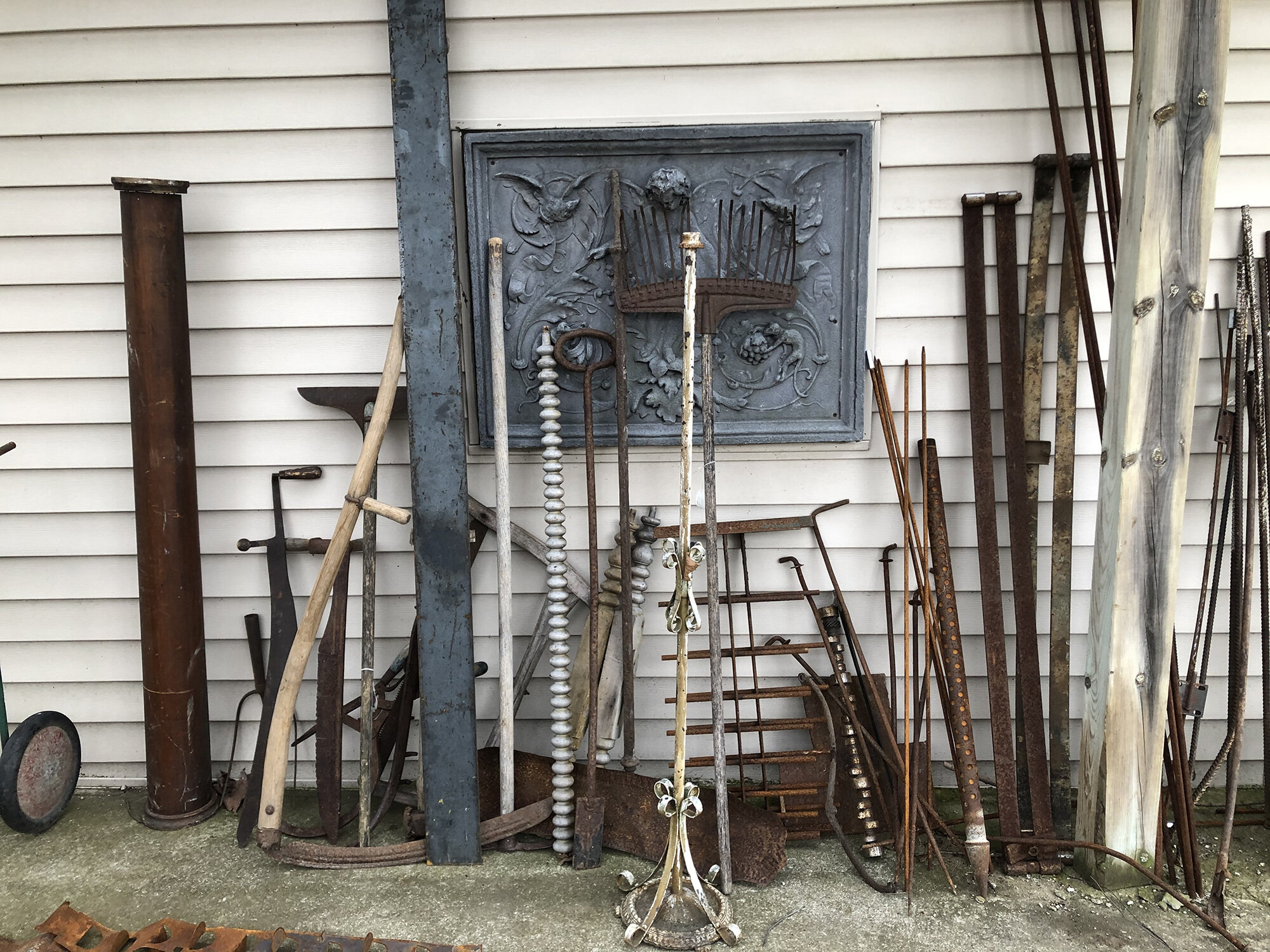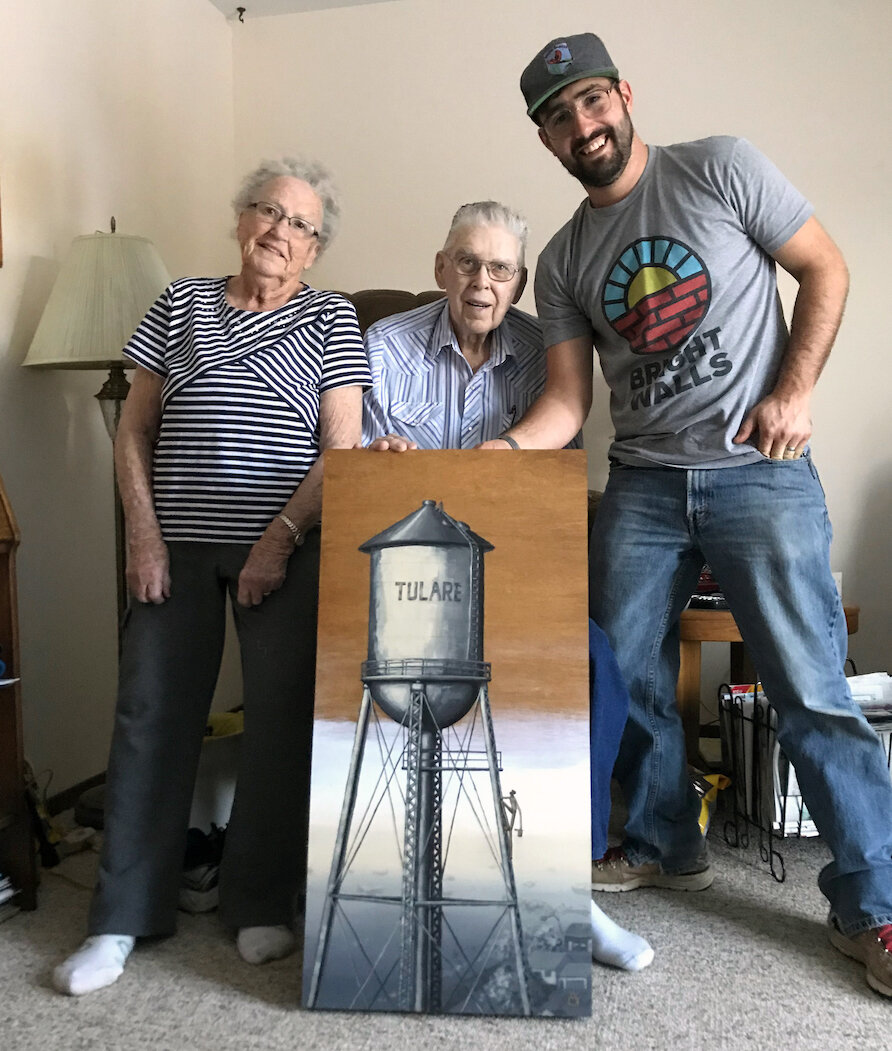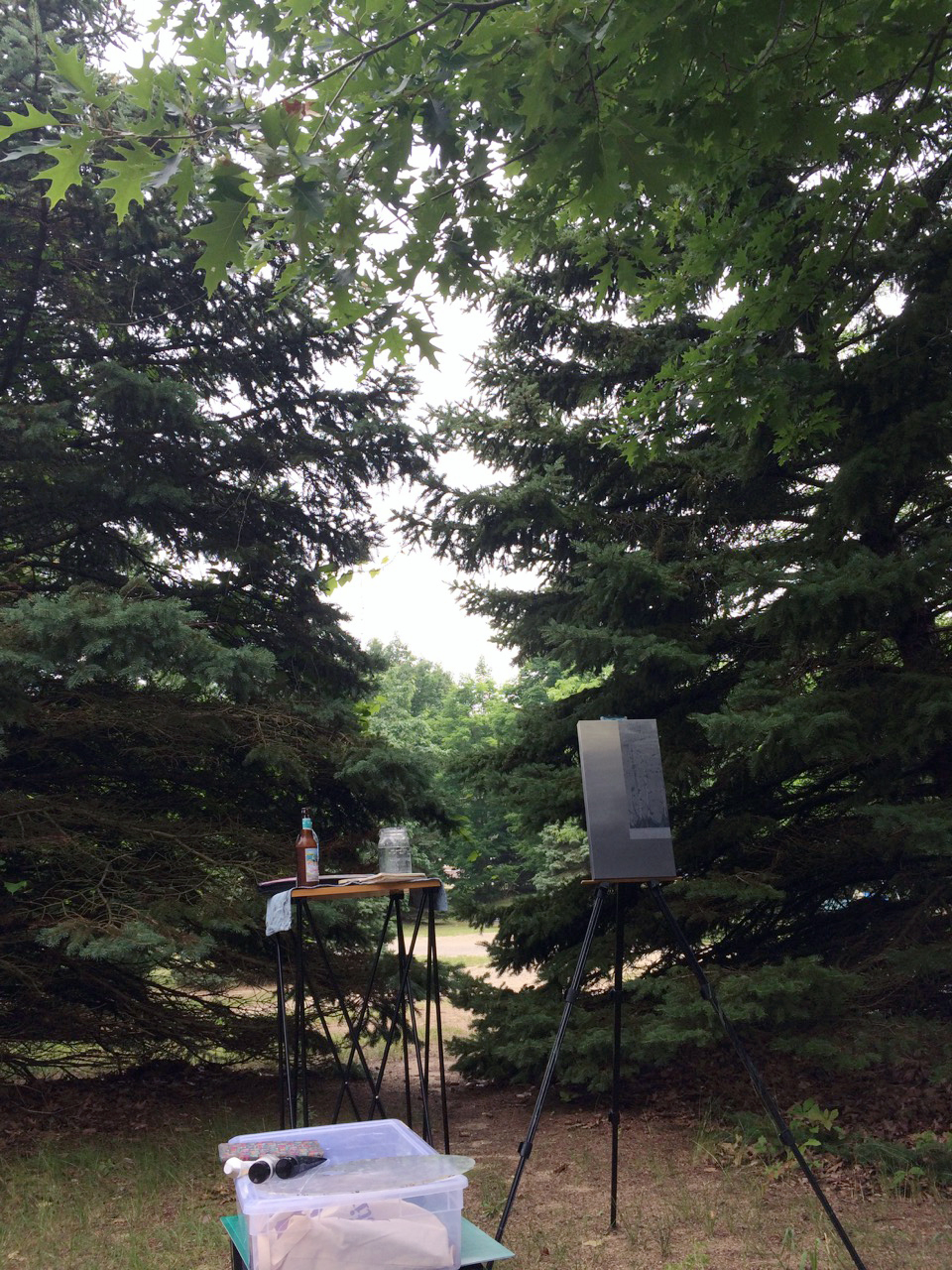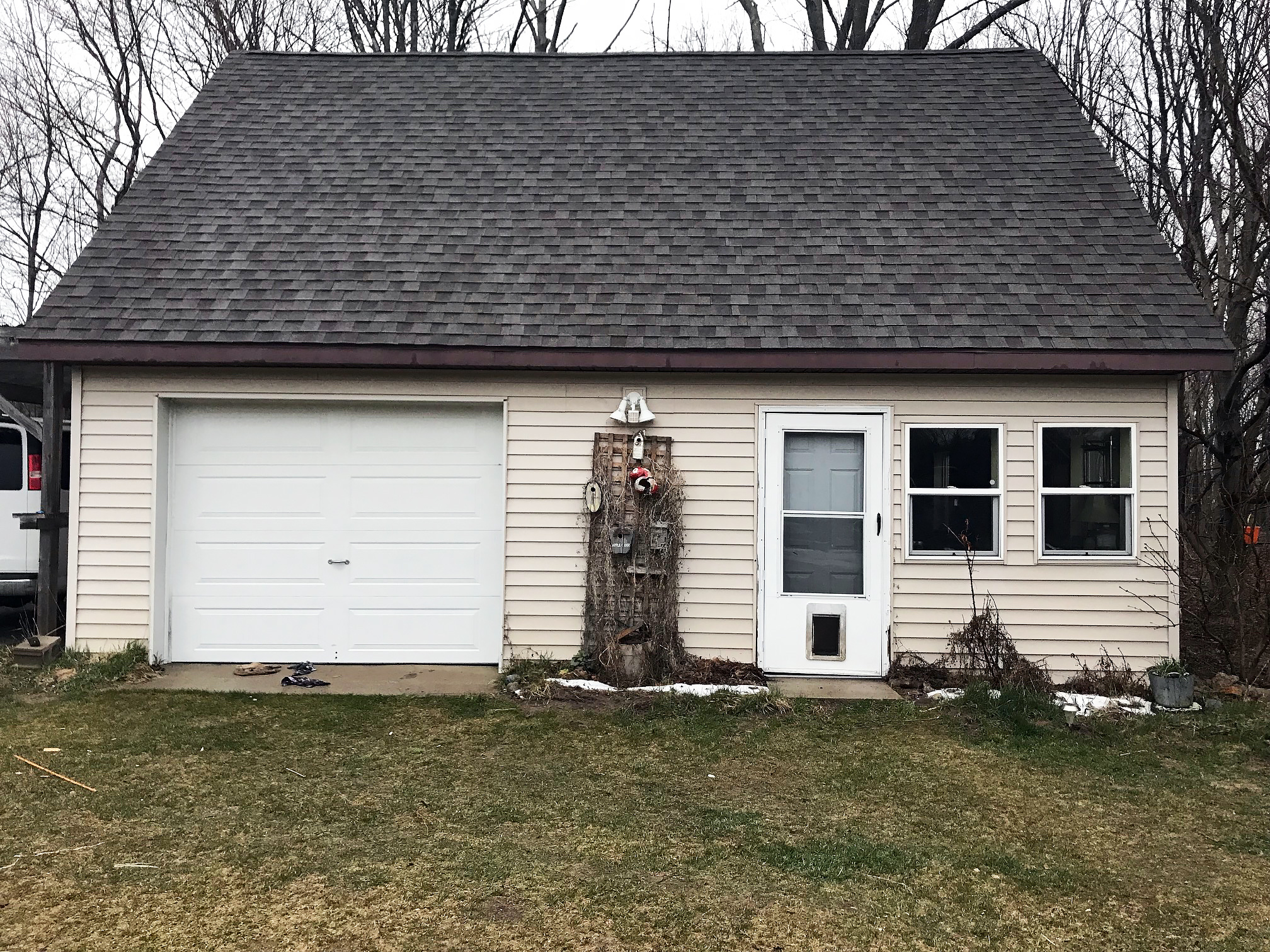An old tractor seat worn from decades of use.
An antique crosscut saw with the teeth still sharp.
Two wrenches that came with every Ford Model A.
A massive cast iron wagon wheel.
A rusty well point.
A tall cylindrical fire extinguisher from the 1920s.
An old shovel head.
Five rusty spark plugs.
A discarded camshaft.
An old crowbar.
A saw used to cut hay centuries ago.
Half an ice tong.
These are but a dozen of the hundreds of items that you might spot as you explore the intricacies of The Lamplighter. The sculpture is composed entirely out of antiquated tools and manmade wooden remnants. These tools are worn from years of sweat, grit, and manual labor and they are now repurposed as a grand gesture of gratitude to these humble workers, a group that includes the Lamplighter himself.
Six stationary bikes (a hand crank is coming soon!) of various sizes encircle the 12.5’ tall sculpture. People of all ages are invited to saddle up. As they begin to pedal, not only do their faces brighten into smiles, but two lights on the sculpture begin to sputter to life. Each pedaler is generating a flicker of light, and as everyone pedals together, the lights shine brighter. This collective illumination is a joyous experience during the day and absolutely spectacular at night.
The Lamplighter sculpture harks back to the early days when streets of most towns and cities were lit by gas lamps. By means of long poles, ladders, and even tall bikes, these lamps had to be lit each night as dusk turned to darkness. Lamplighters provided not only light but also safety in their communities. More than just a job, these harbingers of light represent a way of life: illuminating darkness. We all carry light within us and The Lamplighter is a reminder to collectively connect and spread that light.
This piece of art represents a higher calling: to shine light into darkness and bring about illumination and ultimately, love. There are endless ways to share your light with the world and it is up to each of us to find that path, go boldly into that unknown and be a beacon with our lamps ablaze!
Photo: Well Droned
The Lamplighter sculpture is one way that Ashley and I strive to answer this calling and illuminate the darkness in the world. It is how we hope to make this world a brighter place for all those we encounter, friends and strangers alike. It represents a way of life and brings great meaning to the work that we are so fortunate to do. Our prayer for you is that you find your inner light, you put the time and effort into getting it glowing white-hot, and you let that sucker shine for all the world to see!
The Lamplighter sculpture is available for temporary installation at festivals and cultural events worldwide and is also available for purchase. If you’d like more information about either of those paths, please contact us through our brand new website: www.thelamplighterart.com. Be sure to follow The Lamplighter Art on Instagram (@thelamplighterart) to see where he shines his light and check out the video below for more action!


























































































